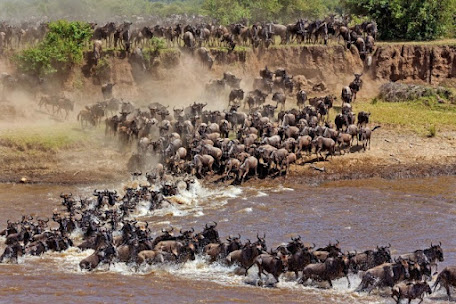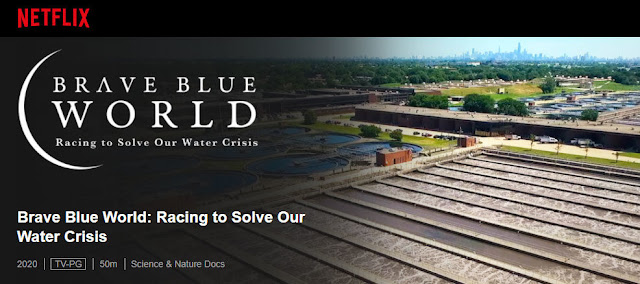The Great Migration
Water is key to survival. I have discussed precipitation patterns and the effects of changing rainfall patterns on people and although incredibly important, the animals we own and the crops we grow are not the only flora and fauna that rely on precipitation. That is why I thought I would look at how the wider ecosystem is affected by water variability, using an example of a natural migration towards water.
The reliance on water by animals is displayed through the migration of species that respond to seasonal precipitation variability and travel extremely long distances through the year. An example of this seen in the Serengeti, located in Tanzania and Kenya, where the great migration involving up to 1.4 million wildebeest occurs (Holdo and Fryxell, 2009). The animals move from the South which is characterised by short grassland in the wet-season to the north and west characterised by tall grass woodland and savanna in the dry-season (Holdo and Fryxell, 2009). Wolanski et al, (1999) found from their research that this migration is heavily linked to water quantity as expected however they also concluded that water quality was just as important when considering reasons for migration. These factors also explain vegetation patterns found in the Serengeti ecosystem and the study found that during periods that had higher precipitation the border between wooded savanna and grassland had shifted (Holdo and Fryxell,2009).
It is often those organisms that are located the outer edges of each biome that are most vulnerable to environmental change as those areas are the often most exposed to changes in conditions (Yackulic et al, 2011). This means that if biomes shift certain populations of species could be at high risk from extinction in the future (Yackulic et al, 2011). In order to properly manage and conserve places such as the Serengeti as much as possible it is important to be able to model and predict climatic factors Wolanski et al, 1999). This will allow risk to be reduced and help protect areas from environmental change, as protected areas have been found to be key in preserving species (Yackulic et al, 2011).
Environmental change influences biomes and all living things within them. In addition to climate change other factors such as land use change also affect the habitats of many living things, this includes humans. Often water has a large role to play in these changes either being the cause of them or water itself being altered as a result.



Comments
Post a Comment